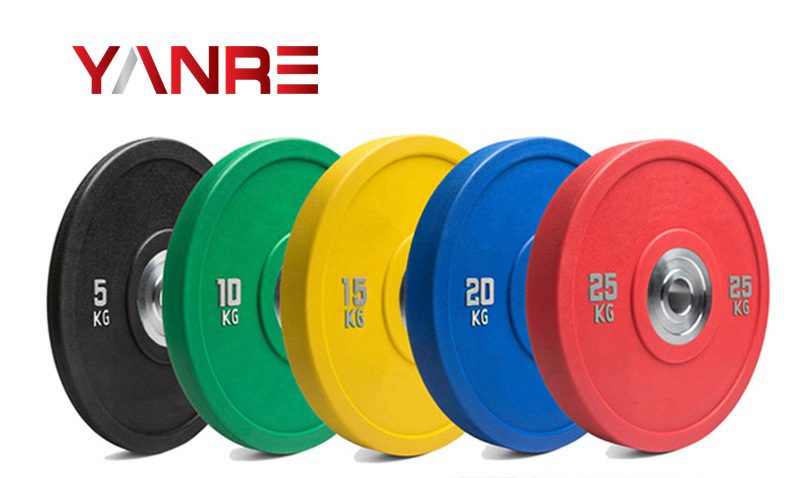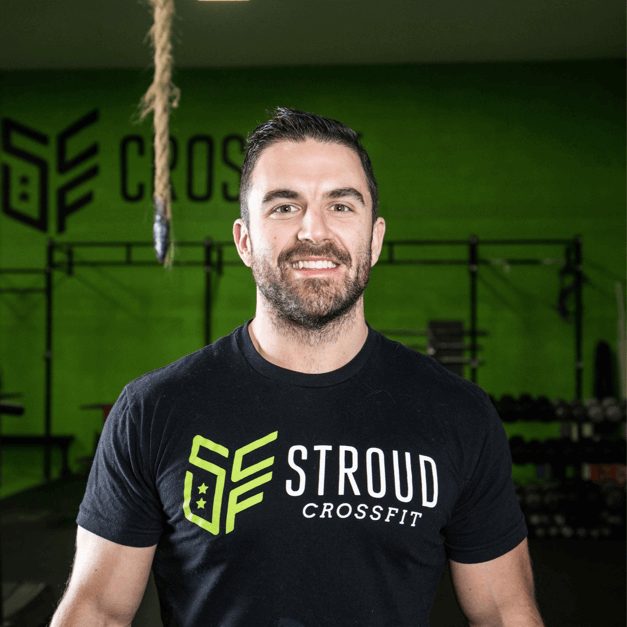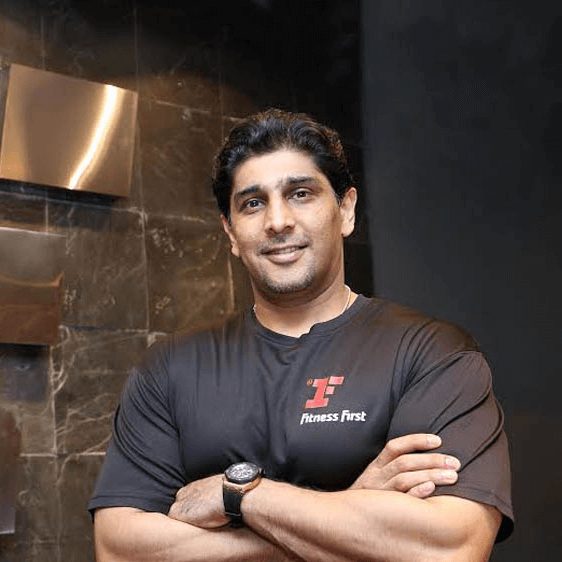For any commercial gym, the necessity of quality bumper plates is undeniable. With all the variety available, making the right choice for your business is not an easy task, though.
It will require in-depth research & insider knowledge.
This article is aimed at providing you with both of these, so you can choose premium-quality bumper plates for your current & future customers.
By the end of this article, you will know all about:
- Commercial bumper plate manufacturing
- Various kinds of bumper plates
- Construction of bumper plates
- The best durometer reading for bumper plates
- The difference between a commercial weight plate & a bumper plate
We have done our utmost best to compile a thorough introduction of bumper plates for you. Our buying guide includes insights from experienced staff working at seven different bumper plate companies.
It will give you an up-close & personal view of the best bumper plates out there.
So, let’s begin,
(Note: Bumper plates have many names. Like rubber weights, Functional Training plates, bumper sets, etc. For the sake of consistency, though, we will use the term bumper plates throughout this article.)
Table of Contents
Location of Bumper Plate Manufacturers
Chinese bumper plate companies are in Nantong, Xiamen, & Qingdao. The factories in & around Qingdao mostly make rubber bumper plates, whereas the ones in Nantong are known for urethane bumper plates.
Between the two regions, Qingdao has higher exports & the products cost more, as well. The factories in the Xiamen region make only premium-quality bumper plates.
Types of Bumper Plates
Bumper plates are of two main types according to function & construction:
Function-based Types
According to function, there are four sub-types of bumper plates:
- Training Bumper Plates
- Competition Bumper Plates
- Technique Bumper Plates
- Change Plates & Fractional Plates
Training Bumper Plates
For weight plates, the diameter & thickness of the plate change as the weight goes up or down. For bumper plates, only one of these variables changes, which is the thickness.
The diameter is the same for all types of bumper plates.
The IWF or International Weightlifting Federation decides the standard dimensions for bumper plates.
Take an Olympic plate as an example. It has a thick & sturdy rubber construction with a 450-millimeter diameter & a 50.4-millimeter steel hub in the center.
It ensures that while coming down from a top-snatch or a clean & jerk movement, there is no damage to the bumper plate or the surroundings.
The weight range for bumper plates & regular cast iron plates is similar. Previously, most weight plates had a cast iron construction.
The safety factor for cast iron plates during use is not that high, though.
The early weight plates were very thick thus, limiting the weight capacity of a barbell.
Bumper plates were the answer to all these shortcomings. Their purpose was to facilitate Olympic weightlifting events.
With time they have become a staple for commercial, as well as home gyms. Most have a central steel hub that allows an increase in thickness without affecting the weight.
The most common type of bumper plate is a training bumper plate. The use of a metal ring makes these plates thicker comparatively than competition plates.
It limits the weight capacity of the barbell, making it likelier for the bumper plate to warp. Due to this, training plates are more cost-effective.
Training plates have a black finish. Recently colored versions with graphics have become available in the market. For Olympic barbells, Olympic bumper plates are available.
Competition Bumper Plates
There are two things that you should know about competition bumper plates:
- Exact definition
- IWF Certification
Definition
Bumper plates that strictly follow the IWF guideline for dimensions, tolerance, & color-coding are competition bumper plates.
These have a steel core inside a thick rubber weight plate to decrease 40-percent of the thickness. It allows professional lifters to add more weight to the sleeve of a barbell.
The two parts of the steel core or hub are held together tightly with bolts. It is the heaviest part of the bumper plate & it goes over a barbell. The steel hub is costly & is available in an array of colors.
Unlike training plates, competition plates have a lower bounce. It is not always the case, though.
The level of bounce is directly related to the durometer shore rating of the bumper plates.
IWF Certification
All manufacturers of competition plates claim that their bumper plates strictly follow the IWF criteria. That is not always the case, though.
Bumper plates that do not fully comply with IWF rules are glorified training plates essentially.
This difference only matters to professional weightlifters that compete in Olympic lifting events. Gaining IWF certification has a high financial cost, which makes the end product expensive too.
So, costly competition plates are of no benefit to regular lifters in the gym.
The weight tolerance for a competition plate is +/- 10-grams or 0.02-pounds of the official weight. It is at least 10-percent higher for weight plates not following IWF guidelines.
This variation in weight is what keeps professional lifters away from other weight plates commonly available online. A 45 lbs. uncertified weight plate may weigh closer to 40 lbs. or even less, in reality.
Sticking to a trusted brand & manufacturer will save you from any problems in terms of weight or construction.
Do keep in mind that the extra weight of the steel hub & strict compliance to IWF rules makes these plates expensive in comparison.
Insider Tips!
- For a competitive weightlifter (IWF or IPF), competition bumper plates are a worthwhile investment.
- For regular lifting, there is no need to pay the higher cost to upgrade to competition bumper plates. Standard weight plates will get the job done, as well. The extra cost will be a burden to your budget.
Technique Bumper Plates
These are beginner-friendly bumper plates. Their purpose is to improve the technique of people new to lifting. They let the users learn to balance the barbell without a high weight load.
These are good for rehab after an injury to slowly get back to using regular bumper plates.
Technique bumper plates are single-piece polyethylene plates with no steel hub in the center. They are similar to training bumper plates in size.
You can get these bumper plates in weight increments of 5 lbs., 10 lbs., or 2.50 Kgs, 3.75 Kgs, & 5 Kgs.
They have a higher per-pound price compared to other bumper plates. The good news is that you need only a pair or two. Technique plates are for indoor use on rubber gym flooring.
Change Plates & Fractional Plates
Change plates & fractional bumper plates are used interchangeably.
Change Plates
Change plates are small. The diameter for these plates is much less than standard bumper plates.
The weight increments for change plates are 0.5 Kgs, 1.0 Kgs, 1.5Kgs, 2.0 Kgs, 2.5 Kgs, 5.0 Kgs or 1.25 lbs., 2.50 lbs., 5.0 lbs., & 10 lbs.
The purpose of these plates is to add small increments of weight to a loaded barbell when adding another standard bumper plate will be too much for the user.
Change plates are a perfect way to develop muscles gradually for both bodybuilders & weightlifters.
Fractional Plates
Fractional plates are another way to add smaller increments of weight to a barbell. The difference between change & fractional plates is the level of the weight increment.
Unlike change plates, fractional plates are available in even lower weight increments, like 0.25 lbs. or 0.125 Kgs.
These are best for increasing the weight load by a small amount rather than a big jump that may end up causing an injury.
Fractional bumper plates are perfect for competitions because they can be added without removing the locking collar.
The inner ring fixes to the barbell & keeps the other plates from moving, as well. These plates do not make contact with the floor during use, so they have a coating of either iron or rubber.
Construction-based Types
Unlike weight plates, bumper plates usually have a rubber construction.
The common materials for bumper plates construction are:
- Virgin Rubber
- Crumb Rubber
- Urethane
Virgin Rubber
Virgin rubber plates are usually manufactured in China. They are solid & thin bumper plates with not much bounce.
This type of rubber is vulcanized, making it hard wearing & long-lasting.
Vulcanization is a chemical process for treating virgin rubber with Sulphur at high temperatures.
Virgin rubber bumper plates are easily portable all around the gym due to their thin & smooth construction.
Virgin rubber is new rubber, it doesn’t come from old tires. It means that there is no need to use any adhesive.
It has an almost non-existent smell that goes away with time, which is good news for people sensitive to strong odors.
It is a shock-absorbent material & will not damage gym flooring.
Crumb Rubber
This type of rubber comes from old rubber scrap like tires. The granular pieces, along with an adhesive, make crumb rubber bumper plates.
Compared to virgin rubber bumpers, these plates are:
- Softer
- Cost-effective
- Less dense
They have a higher bounce, as well.
The adhesive is an essential part of the recycled bumper plate manufacturing process. Its quality affects the lifespan & odor of the end product.
Quality adhesives increase the durability of the bumper plates. There is always a smell to recycled rubber products, though it will be much less noticeable.
The durability of these plates is not as high as the virgin rubber ones. There is more wear & tear with use.
The level of durability differs between bumper plates from various brands or companies.
Take Hi-temp plates from Tuscumbia, Alabama, as an example. Industry professionals & athletes alike agree that they are the best bumper plates available.
These use heavy-duty rubber with a two-inch, stainless-steel hub for construction. Hi-temp plates may not be the most aesthetically pleasing plates, but their performance is the best.
Crumb rubber plates have more width, so fewer plates will fit on a barbell sleeve at a time.
These plates are superior to virgin rubber bumper plates in shock absorption, price, & the overall effect on the environment.
Urethane
The third material for the construction of bumper plates is urethane. It is a synthetic material. It combines the qualities of both rubber & plastic.
Due to this, urethane plates have a more accurate weight tolerance & bounce.
They are also very hardwearing & maintain their shape upon impact in case of an accidental fall.
Urethane plates have vibrant colors & are more pleasing to the eye because they mix well with coloring compounds.
Urethane bumper plates are thinner, so more can fit on a barbell sleeve. The weight is closer to the center of the plate allowing a more stable barbell lift. Because these are a mix of rubber & plastic, there is almost no smell to deal with.
Compared to all other plates, urethane bumper plates have the least bounce. All of this makes them costlier than their counterparts.
Urethane bumper plates are an investment, in the long run, considering all of their qualities.
Parts of a Bumper Plates
There are two parts of bumper plates:
- Plate
- Steel Hub
Plate
The quality of the plate itself depends on the construction. Urethane plates have an edge over both virgin & crumb rubber bumper plates.
Hi-temp plates are premium-quality bumper plates.
Steel Hub
The central steel hub is an essential part of the bumper plate. All professional plates have a central steel hub that is either galvanized or has a hard chrome finish.
Bumper plates without the central hub are also available.
Some manufacturers had the idea to try brass for the central hub a few years back. It was not successful because brass is softer than steel, making it less durable & susceptible to damage.
Nowadays, most bumper plates have stainless steel hubs.
Although, it is still possible to find plates with brass hubs in the market. They are not a smart buying choice.
For a secure lift, the steel hub collar must fit snugly onto the barbell. If it’s too wide, there is a risk of the counterweight sliding.
Both the hub & the barbell diameters should be close to each other to ensure that the plate can be put on & taken off the barbell with ease.
Stainless steel hubs use steel 45. The steel hubs of bumper plates vary in thickness according to weight, but the diameter remains constant regardless.
There are three reasons for choosing bumper plates with steel hubs:
- Metal gives the bumper plates a professional look
- It makes up around 40% to 50% of the total weight of the bumper
- The presence of the steel hub decreases the thickness & allows more plates on the barbell at a time
Physical Properties of Bumper Plates
Shape
Bumper plates are circular. They essentially look like a flat disc. For an easy pick off the floor, it is better to have a lip on the edge of the bumper plate.
It will increase the width of the plate, as well, preventing damage due to accidental impact.
Weight
Bumper plates have a weight range the same as Olympic plates. They are available in both weights & kilograms.
| WEIGHT IN POUNDS | WEIGHT IN KILOGRAMS |
| 55-pounds 45-pounds 40-pounds 35-pounds 25-pounds 15-pounds 10-pounds | 25-Kilograms 20-Kilograms 15-kilograms 10-Kilograms |
There is more variety of bumper plates available in pounds than kilograms. According to IWF rules the weight tolerance should be within +/- 10-grams of the official weight.
Most wholesale bumper plates have a weight tolerance between 2% to 3%.
Yanre Fitness bumper plates have an exact weight tolerance of +/- 1%.
Color-coding
As I have stated before, bumper plates vary in thickness but have the same diameter. It makes it difficult to tell them apart from a distance.
IWF rules have color-coding guidelines for bumper plates due to this reason. All the participants in Olympic competitions have to follow these guidelines.
Color-coding not only makes it easy to pick & calculate the correct weights, but they are also a visual motivation for the users, as well.
The color-coding for weight according to IWF rules are as follows:
| COLOR-CODING | WEIGHT RANGE / WIDTH |
| Red Blue Yellow Green White | 25-Kilograms or 2.5-inches 20-Kilograms or 2-inches 15-Kilograms or 1.5-inches 10-Kilograms or 1.0-inches 5-Kilograms or 0.5-inches |
The color-coding rule is not limited to bumper plates. All competition weights have to follow them.
The weight is mentioned on rubber plates with permanent ink. On urethane plates, it is molded in raised letters. The color of the weight print is different from the color of the bumper plate to make it easy to read.
Bumper plates that don’t follow the IWF color-coding rules or have their own color scheme & weight range are not recommended.
Noise-level
Steel or cast-iron weight plates are louder than bumper plates. Urethane & rubber bumper plates are shock absorbent.
They have a low bounce & are much quieter than other plates.
Smell
Anything that uses rubber will have the typical rubber smell. Between recyclable & virgin rubber plates, the latter has a milder odor.
Urethane bumper plates have the advantage of being almost free of any kind of smell.
Hi-temp plates are the most long-lasting of all bumper plates. They have a strong rubber smell which makes them unsuitable for home gyms.
Though, they are a better fit for larger spaces like commercial or garage gyms.
Bounce & Hardness
The goal of a commercial bumper plate is to have a dead or very low bounce. It means that once the plate makes contact with the gym floor, it will come to halt.
It is almost impossible to keep a bumper plate completely still on impact.
So, the aim is to keep the bounce as low as possible. To achieve a dead bounce the shore hardness level should be 100.
Shore hardness is the measure of the hardness of a material. The higher it is, the lower would be the bounce.
Shore Hardness Scale
It is known as the shore hardness scale or shore A durometer scale. It is an invention of Albert Ferdinand Shore.
As I have mentioned above, it is the measure of the hardness of a material.
The higher it is for a bumper plate, the lower the bounce on impact to the floor will be. A higher shore rating also means a higher noise level. The range for shore rating for most commercial bumper plates is from 70 to 95.
A bumper plate with a shore rating of 95 will bounce less but is louder than one with a shore rating of 75.
Noise level is a priority, though. Commercial gyms are already very noisy. No one wants to add to that. If low noise levels are a requirement for you then choose crumb rubber plates.
They have medium to hard consistency.
Virgin rubber is harder than crumb rubber. Virgin rubber bumper plates have higher durability, lower bounce, & are louder.
Competition plates have higher shore ratings, in general. In the end, it is a balancing act between bounce & noise level for commercial gyms.
Bend
Mediocre rubber & constructions make the bumper plates susceptible to bending. This is more of a risk for thinner plates.
Bending deforms the bumper plates making an uneven load on both ends of a barbell.
Buying Tips & Things to Avoid
- Construction: Research the materials of the bumper plates carefully. Look out for the bumper plates that use impure urethane or low-quality crumb rubber. Some manufacturers use low-quality metal for the core to compensate themselves.
- Tolerance: Weight tolerance is an essential factor to consider. Especially if you want to buy competition bumper plates. Plates with good weight tolerance have better performance.
Weight tolerance of more than +/- 3% is not a smart buying choice.
- Warranty: Always ask about the warranty period from the manufacturer as it affects the total cost of your order. Quality bumper plates have a minimum of one year warranty period.
- Width & Diameter: Commercial bumper plates should have a diameter of around 450 millimeters. The measurement of the collar opening should be closer to 50.4 millimeters, according to IWF rules.
- Accurate Color-coding: Confirm that there is correct color-coding of bumper plates, according to IWF guidelines. The color of the weight plates should be even all over, as well.
- Print or Lettering: Most bumper plates have the weight numbers on the bumper plate in print or raised lettering. Printed letters fade with time so, raised letters are the better choice.
- Steel Hub: The perfect material for the metal hub is either steel or stainless steel. Brass central hubs are not long-lasting.
Hard chrome or zinc-plating is the better choice of a finish.
- Drop-test: Trusted manufacturers have drop-test data available on the official company websites. Take a closer look at it to form an opinion about bumper plate quality & durability.
Yanre Fitness Drop Test Details
Yanre Fitness guarantees the following number of uses from its bumper plates, even after a drop of 2.2 meters:
| TYPE OF BUMPER PLATES | NUMBER OF USES |
| For competition plates For Training plates For Hi-temp plates | 20,000 uses 10,000 uses 30,000 uses |
Conclusion
The choice of suitable bumper plates for your gym is a tough one. Hopefully, you find the information in this article of some help in your search.
Now that you know what to look for in terms of bumper plates, go through our Best Gym Owner’s Barbell Buying Guide.
Feel free to use the comment section below if you have any more questions.
Click on Yanre Strength to have a look at our complete range of bumper plates.
Don’t wait.
Ask for a quote now!
Related acticles:







